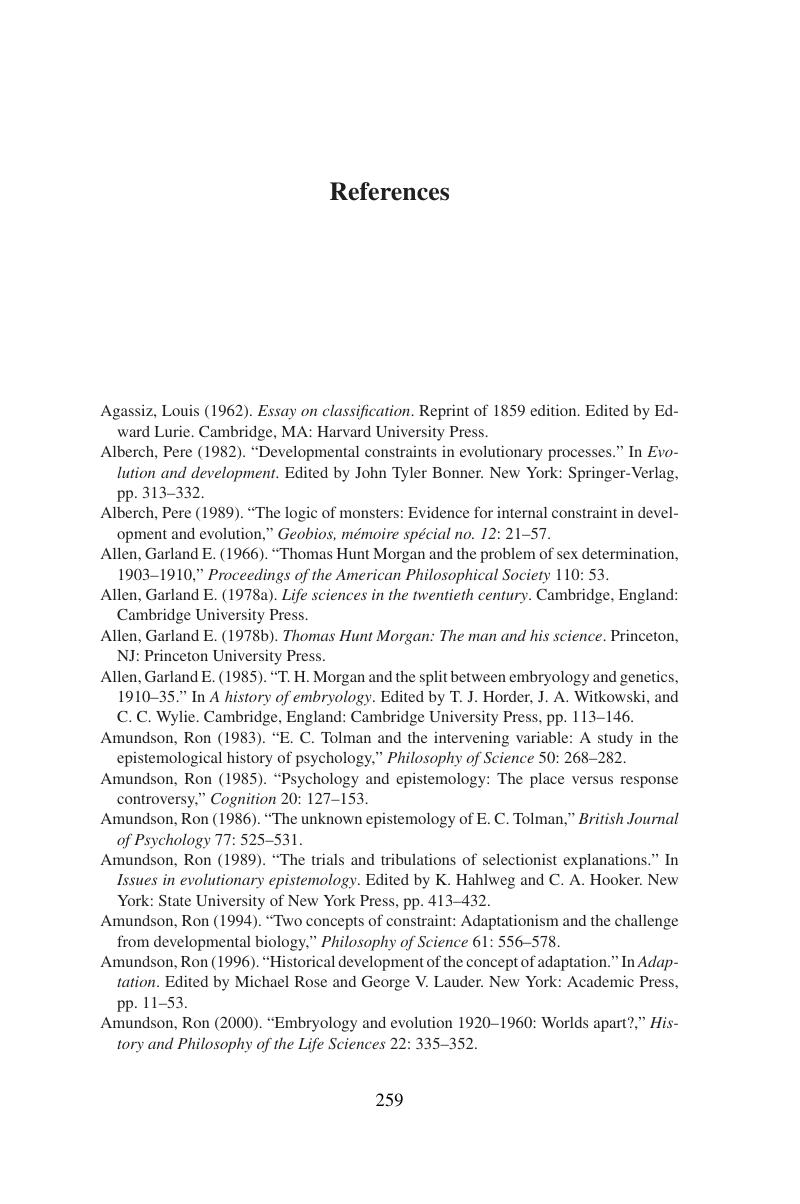References
Published online by Cambridge University Press: 05 June 2012
Summary

- Type
- Chapter
- Information
- The Changing Role of the Embryo in Evolutionary ThoughtRoots of Evo-Devo, pp. 259 - 274Publisher: Cambridge University PressPrint publication year: 2005

